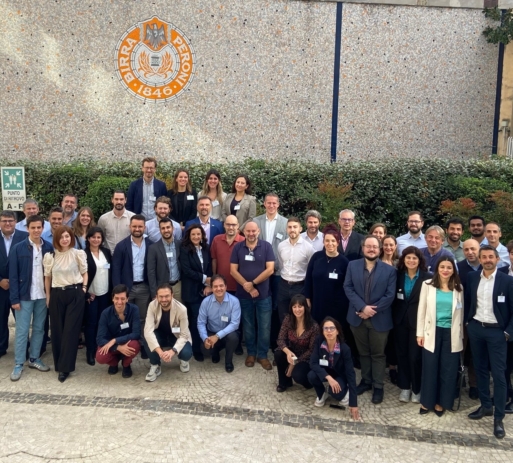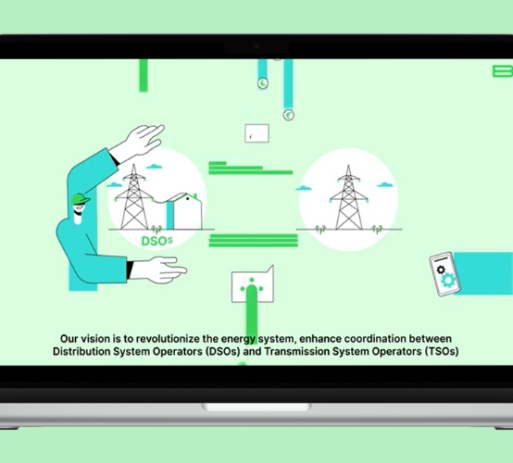BeFlexible use cases and requirements
Article authored by Ricardo Bessa, from INESC TEC
Over the last 15 years, the energy sector has undertaken a structural transformation summarized by the 3Ds: decarbonization, decentralization, and digitalization.

Pushing for Decarbonization: Achievements and Obstacles
The drive towards decarbonization has seen notable progress through intensified integration of renewable energy sources (RES). This involves strategic actions, such as replacing carbon-intensive technologies like coal power plants with large-scale RES power plants, increasing RES self-consumption rates among industrial, domestic, and transportation users, and electrifying vehicle fleets. Additionally, efforts extend to new energy vectors like green hydrogen and energy storage technologies, providing enhanced system flexibility, including seasonal storage, and at least keeping the security of energy supply. However, the substantial increase in RES introduces significant challenges in all energy system elements: generation, transmission, distribution, and consumers.
Decentralization: Empowering Local Energy Solutions
Decentralization is being realized through various actions. This includes distributed generation technologies such as cogeneration power plants, collective photovoltaic installations, and waste reuse, offering local consumers and communities electricity at a costs below retail prices. The emergence of the prosumer, a citizen capable of producing and consuming electric energy, further contributes to decentralization. Prosumers can buy and sell electricity to the primary grid individually or as part of a local energy community. The evolution of new business models focusing on shared asset ownership, renting, and robust financial and regulatory frameworks is crucial in ensuring energy equity and resilience, especially for vulnerable consumers facing variations (and significant increases) in electricity prices.
Digitalization: The Smart Energy Revolution
Digitalization, a driving force behind these transformations, was initially driven by deploying smart meters. However, recent advancements in Internet-of-Things and cloud technology are expanding digitalization beyond the electrical infrastructure to encompass grid users and service providers, including those from related sectors like mobility. Concepts like digital twins, energy data spaces, and the Internet of Energy are emerging, with several pilot projects currently in progress, meaning a shift towards a more connected and intelligent energy landscape.
BeFlexible Project Business Use Cases
In this context, the BeFlexible project drafted 13 business use cases (BUCs), which enabled the identification of business requirements for flexibility-centric services covering Distribution and Transmission System Operators (DSOs and TSOs), aggregators, energy services providers, and other sectors such as mobility and water distribution. These BUCs were divided into four groups:

- Consumer/community-centric flexibility: planning and operating renewable energy communities and citizen energy communities, as well as the optimal control of domestic thermal loads to enhance flexibility provision.
- Grid-centric flexibility: long-term and short-term congestion and voltage constraints management in the distribution grids, considering aggregating flexibility from household thermal assets, battery energy systems, and building energy management systems.
- TSO-DSO flexibility coordination: integrating distribution grid-connected resources into global flexibility procurement, avoiding indirect contingencies on DSOs, and coordinating TSO and DSO procuring DER system services through local and global markets.
- Cross-sector flexibility boosters: operation of a flexibility-centric value chain enabler, whose objectives include unlocking consumer flexibility, simplifying customer identification for demand side flexibility services, establishing renewable energy communities, and creating business opportunities by connecting prosumers, aggregators, and system operators. Cross-sector use cases consider functions to enhance cross-sector flexibility between water and electricity distribution systems and incentivising electric vehicle drivers for cost-effective and carbon-friendly charging.
The essential business requirements from the BeFlexible use cases were categorized into market and regulatory, social sciences and consumer engagement, and other requirements, including data privacy and security.
The analysis focuses on DSO remuneration, regulatory experimentation, energy communities, aggregation, submetering, baseline, acquisition mechanisms, and market structure in the market and regulatory domain. It emphasizes aligning BUC processes with existing regulations, addressing challenges in DSO remuneration, promoting regulatory experimentation, steering energy community regulations, ensuring compliance in aggregation activities, addressing submetering challenges, defining baselines for flexibility provision, handling acquisition mechanisms, and considering new market structures.
The social science and consumer engagement domain highlight requirements for local energy communities, emphasizing the need to clarify shared resource benefits, address data sharing concerns, establish contractual agreements, ensure effortless device/software installation for thermal loads, provide user control in automated processes, and prioritize non-energy services to drive user participation.
This analysis also highlighted the significance of General Data Protection Regulation (GDPR) compliance across all BUCs involving customers, emphasizing the commitment to legal and ethical standards in handling personal information and data.
This article summarizes key takeaways from Deliverable 3.1, titled “Services, use cases and requirements” developed within the framework of the BeFlexible project. To access the complete document, please click here.
Stay tuned with BeFlexible by following us on LinkedIn and X!





